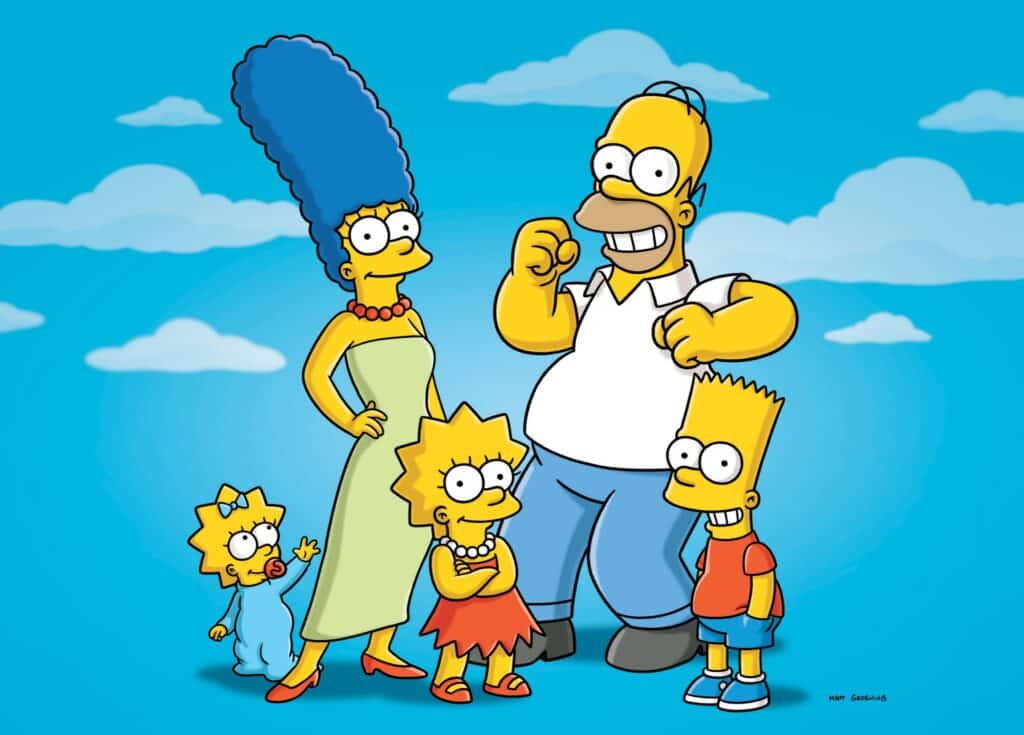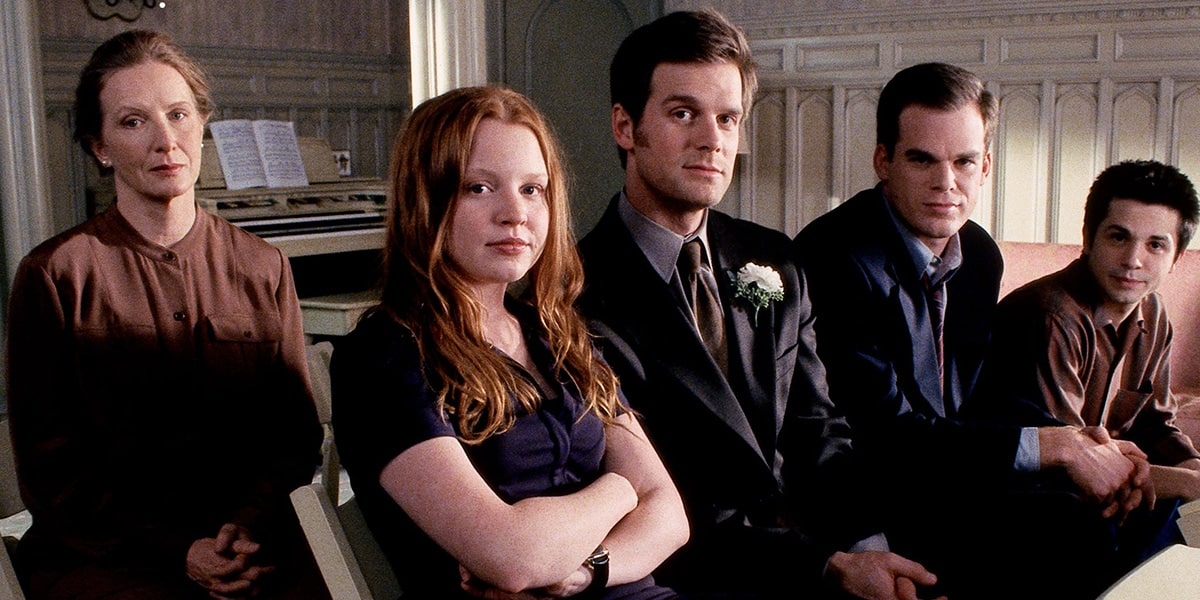Families look different than they did 50 years ago—and television has reflected those changes.
On the evening of January 23, 1977, two wildly dissimilar events conspired to create a pop-culture milestone. The premiere of the miniseries Roots aired on ABC; and a snowstorm blanketed more than a third of the country, all but forcing Americans to watch it. The debut episode wrangled 28 million viewers for the network. But word of mouth quickly spread. The finale garnered 100 million—numbers seldom seen today—and remains one of the most-watched episodes in television history.
Based on the Pulitzer Prize-winning novel by Alex Haley, Roots told the story of Kunta Kinte, a West African teenager kidnapped by slave traders in 1767 and brought to the United States by way of the Middle Passage. The series chronicled the man’s brutal life on two plantations—and the toils of his descendants, enslaved or freed.
Roots shook American audiences. Winner of the prestigious Peabody Award and nine Emmys, the miniseries forever changed the landscape of American television for illuminating perhaps the darkest chapter in American history. Decades later, it’s still a visceral experience, but at its heart, it was a focused look at the roots of an American family.
With a crop of new programs starting soon—some of which involve families—we decided to look back on some of the best shows that represent the ever-changing family dynamic.
Family Affair
(1966-1971) ABC
Family Affair may look like a Hallmark card brought to life—and oftentimes it felt like one. But it was also mildly revolutionary for its treatment of adoption and single fatherhood. Brian Keith played a New York City bachelor whose life is upended—and enriched—after adopting his deceased brother’s three children: Cissy, Jody, and Buffy. Manipulative fluff? Without question. But ’60s audiences needed a little sugar to swallow this deceptively dark premise.
The Brady Bunch
(1969-1974) ABC
Easily the most unrealistic series on this list (Bathrooms without toilets? A maid who works for nothing?), The Brady Bunch still stands as a favorite among Gen-Xers for its unbridled campiness—and the decades of syndication haven’t withered its wacky appeal. But if viewers take a closer look, they’ll see a syrupy-sweet, blended family who navigate the world together, even if that world in no way resembles the real one.
Good Times
(1974-1979) CBS
A vibrant African American family of five scraping by in Chicago’s ganglands is hardly the recipe for comedy. But under the helm of Norman Lear—and anchored by powerhouse combo Esther Rolle and John Amos—Good Times managed to be gritty, subtly political, and deeply funny. There was much to admire about the series, which addressed issues of poverty and unity. Strip away the slapstick (and often needless) distractions of costar Jimmie Walker, and what audiences have is an honest look at how the family unit can be a shield from life’s cruel winds.
One Day at a Time
(1975-1984) CBS
Credit to Netflix for reviving the series with a Cuban-American family, but respect should be paid to its predecessor. Starring Bonnie Franklin as a single mother raising two teenage daughters, it was the first prime-time sitcom to feature a divorced woman. While not all the ingredients in the show’s recipe worked (the Schneider character was a #MeToo nightmare), One Day at a Time showed viewers that the nuclear family isn’t always possible—or even desirable.
Family Ties
(1982-1989) NBC
This ’80s classic may have served as a launching pad for Michael J. Fox, but Family Ties was far greater than the sum of its parts. Benefiting from strong writing, topical subjects (who could forget Tom Hanks’ guest turn as a visiting uncle with a drinking problem?), and a solid ensemble of actors, the series centered on two ex-hippies raising their four children in the suburbs of Columbus, Ohio. Family Ties eschewed the formula of its day and favored teaching over preaching. The result was a funny, fresh-for-its-time look at a middle-class family in Middle America.
The Wonder Years
(1988-1993) ABC
Too weighty to be a sitcom and too funny to be a drama, The Wonder Years is hard to categorize—and that was its strength. The series focused on Kevin Arnold (played to perfection by Fred Savage), but it was really about life during the tumultuous 1960s: war, civil unrest, social mores, strained but loving families, and the everyday traumas of burgeoning adolescence.

The Simpsons
(1989-PRESENT) FOX
Is it the greatest comedy in history? Possibly, yes, though it is more than a decade past its prime. At its peak, this animated landmark was a heavenly blend of pitch-perfect writing and tour de force vocal performances.
But what has made The Simpsons such an enduring classic beloved by a generation of channel surfers is how the show kept its focus on the five family members: flawed, ferociously funny, but somehow wholly relatable.
Six Feet Under
(2001-2005) HBO
The Sopranos may have absorbed the lion’s share of press coverage and awards during its run (see sidebar below), but, for this critic, Six Feet Under was a more digestible examination of an American family. Centering on the Fishers, proprietors of an independent funeral home in California, Alan Ball’s darkly comic masterpiece juggled life and death issues with equal assurance—all told through the damaged lives of its members. Perhaps no other series on television addressed this life and the next in such a thoughtful way.
Black-ish
(2014-2022) ABC
What makes this impeccable comedy still watchable is how deftly the writers juggle heaviness and levity. Peripheral story lines tend to drag the narrative down: Black-ish, indeed, works best when the stories center on the Johnsons. And there is perhaps no better live-action sitcom currently that delves into race in America quite as this one does. The cast is spectacular, particularly Anthony Anderson and Tracee Ellis Ross, the best parental force on television today.
Fallen Family: The Sopranos
Let’s address the obvious: HBO’s look at a New Jersey mobster could be grueling to watch. But what made this Emmy-winning series redeemable was its exploration of Tony’s moral desolation. He was so mired in an existential quandary, in fact, that he underwent psychotherapy for years to address it.
As a portrait of an American family, The Sopranos is worth revisiting. Two families dominated the series: Tony’s family at home and the organized crime family he ran. Both provided emotional gravitas for viewers to savor. And though his actions cannot be explained away, his devotion to both families was, from an angle, exemplary. That dichotomy made The Sopranos irresistible viewing—a plunge not only into the decay of a man’s soul, but of a family man who traded his soul in for sin.








